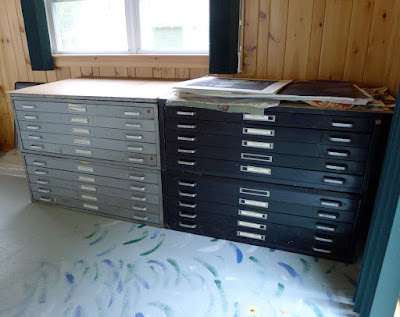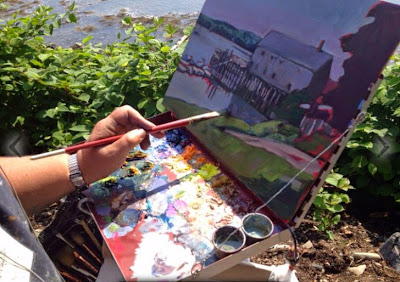 |
| Hard to see how one can have a mailbox here. Where does it go? |
Since my husband had already field-tested my router in Rochester, setting up my internet connection was basically plug-and-play. That was a pleasant surprise for my overtired brain, which was expecting the usual scramble of crossed wires and endless holding for technical support.
| The house is 125 years old, and the center of this bedroom floor has never been finished. I’m afraid I might break with tradition, though. |
My New Year’s resolution was to unsubscribe from every email advertising list, and I kept it. Still, there were 444 messages in my inbox when I got back on line. Amid the detritus, I found this one about my workshop: “I’m interested in joining you in Maine but the form I have has your Rochester address on it and from following your blog I know you’re moving. Where should I mail it?”
| I always was a sucker for a cute wood stove. |
This has me flummoxed. There is no mailbox at this house, and my pal from West Rockport told me she doesn’t have one, either. I’d just buy one and put it up, but there’s a sidewalk running along the curb. I can’t see any way a person in a mail truck can lean over far enough to shove the mail in a box. Nor am I keen on going into town every day to get my mail.
This morning’s project is to sort out the mailbox issue and to ponder a life where it’s easier to get email than physical mail.
 |
| My pizza-baking daughter is coming to visit later this month. I may not have my studio set up, but I’m ready for her! |
This afternoon I head down the road to Olana for the annual New York Plein Air Painters retreat and a nice chin-wag with my pal Jamie Williams Grossman. That beats the heck out of setting up housekeeping any day. I know where my paints are. If I can find my clean clothes, I’m golden.
Let me know if you’re interested in painting with me on the Schoodic Peninsula in beautiful Acadia National Park in August 2015. Click here for more information on my Maine workshops! Download a brochure here.
Addendum: The post office supervisor is going to check this out and then get back to me. In the meantime, they’re holding my mail for pickup. They couldn’t be nicer folks.


























